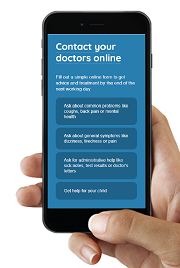The UK’s economy grew by 4.8% in the second quarter of 2021, following the easing of lockdown restrictions.
But, while a large proportion of the general public have been embracing new ways of hybrid working and returning to their favourite pastimes – eating out, drinking out and shopping – there’s been a lot of uncertainty as to what this new found freedom means for general practice.
According to the latest data from NHS Digital, demand for GP services is quickly outstripping capacity.
In fact, in June 2021, non-vaccination appointments were up by 3.5 million compared to May 2020, and 3.6 million compared to pre-pandemic June 2019.
And, amid ongoing concern from GPs and healthcare professionals that the recent unlocking of the UK will lead to further strain on NHS services, little consideration has been given to how GPs can better manage this influx in demand on top of their already-overflowing in trays.
Over the course of the pandemic, the primary healthcare sector has been forced – somewhat out of necessity – to embrace more digital ways of working.
amid ongoing concern from GPs and healthcare professionals that the recent unlocking of the UK will lead to further strain on NHS services, little consideration has been given to how GPs can better manage this influx in demand on top of their already-overflowing in trays
Electronic prescriptions, the ability to remotely access clinical systems securely via Virtual Private Networks (VPN), and the adoption of digital triage services have been transformative for both GPs and patients during a particularly-straining time.
But there is a clear need for practices to embrace the technology and tools that empower GPs to embrace hybrid working, while still supporting patients, from any location, with any request, in the long term.
Digital triage for the long term
The rise in implementation and demand of digital triage since the pandemic has been evident from the number of online consultations being carried out.
For example, at eConsult, we went from 130,000 online consultations across 1,200 practices in February 2020, to over one million across 3,200 practices in the same month the following year.
For many surgeries, digital triage may have initially felt like a temporary measure to serve patients that couldn’t make it into the surgery as a result of COVID-19. However, it is emerging as a long-term solution to supporting GPs in embracing hybrid working.
With digital triage, GPs can send messages via email/SMS to their patients, including prescriptions, delivering personalised information that the patient can trust.
However, it is important to note that the point of digital triage is not to remove face-to-face consultations altogether.
In-person appointments will always play a critical role, especially for more complex or urgent cases.
For many surgeries, digital triage may have initially felt like a temporary measure to serve patients that couldn’t make it into the surgery as a result of COVID-19. However, it is emerging as a long-term solution to supporting GPs in embracing hybrid working
Instead, digital triage is intended to remove the ‘noise’ - hayfever, blood tests, repeat prescriptions - and is set up to empower GPs to dedicate more time and headspace to the more-complex patients who need face-to-face appointments.
For patients, digital triage ensures those who need to be seen aren’t stuck in a long phone queue at 8am desperately trying to get through before their day starts and that they actually get support quickly.
Outsourcing support
In instances where demand becomes particularly high in a specific region, we’re seeing some GPs embrace outsourcing in order to allocate resources to where they are needed the most.
This doesn’t just mean hiring remote doctors, as we recently saw with the Ranworth Surgery in Clacton-On-Sea, which opted to hire a part-time remote GP after struggling to find a traditional salaried GP.
But there’s a real opportunity for GP surgeries to embrace eHubs.

Using digital triage solutions GPs can send messages via email or text to patients
In this context, these are online systems for delivering digital and traditional primary care across primary care networks (PCN).
The first model eHub, which was set up by The Hurley Group, offers PCNs the chance to reduce the crushing workload from the pandemic by working together to resolve patient issues that don’t necessarily require face-to-face consultation.
It’s important to note that the individuals resolving the patient query don’t just have to be GPs, but can be skilled primary care specialists such as nurses or pharmacists, further alleviating the pressure.
This is a revolutionary idea that delivers patients the care they need in an efficient, safe, and timely manner by empowering GPs to seamlessly deploy a remote workforce at a time of critical need.
If we want to give our GPs the support they need and ensure the delivery of a high standard of care, embracing technology and using it to its highest potential will be critical
If we take The Hurley Group’s eHub as an example, over the course of 10,000 online consultations, a remote closure rate of 86% created an estimated saving of more than £82,000.
This is an exciting model for GP practices across the country to explore, but it’s success will ultimately rely on robust training and dedication to the building of experience within the team.
A ‘new’ approach to general practice
As life returns to some form of ‘normality’ and we learn to live alongside COVID-19, the operation of general practice should not return to normal.
Normal means overflowing waiting rooms, the 8am phone call lottery, and no flexibility for GPs.
Instead, if we want to give our GPs the support they need and ensure the delivery of a high standard of care, embracing technology and using it to its highest potential will be critical.
The end goal should always be more time with the patients who need it the most, and a flexible approach to work for our NHS heroes.
